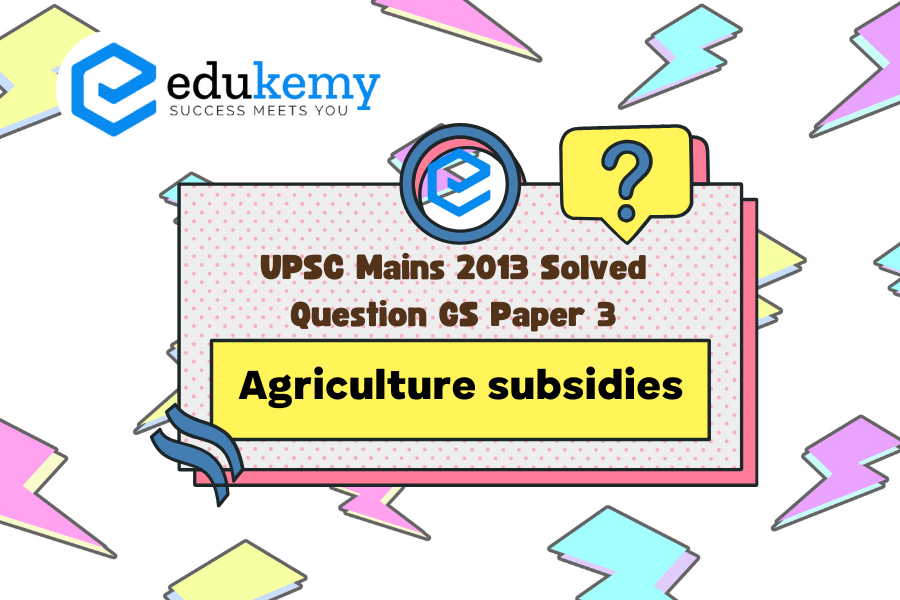Agriculture subsidies play a pivotal role in shaping the economic landscape of farming communities, both at the national and state levels. These subsidies are diverse, ranging from price support mechanisms and input subsidies to income support schemes and agricultural insurance programs. At the national level, governments often provide subsidies for essential inputs such as fertilizers, seeds, and machinery, aiming to alleviate the financial burden on farmers and enhance agricultural productivity. State governments, on the other hand, may offer additional subsidies tailored to local agricultural needs and challenges. While these subsidies are intended to bolster the agricultural sector, they often come with unintended consequences and distortions. For instance, price support mechanisms can lead to overproduction and market inefficiencies, while input subsidies may exacerbate environmental degradation and resource depletion. Therefore, it’s crucial to critically analyze the agriculture subsidy regime to mitigate such distortions and ensure sustainable agricultural development.
Tag: Issues related to direct and indirect farm subsidies and minimum support prices.
Contents
Decoding the Question:
- In the Intro try to write about agricultural subsidies and related data.
- In Body,
- Discuss direct and indirect farm subsidies at national and state level.
- Write positives and negatives of subsidies.
- Try to conclude the answer by writing it in a contextual manner.
Answer:
In India around 600 million farmers are dependent on agriculture and maximum of farmers are being under marginal small landholders who are having low income and resource poor and mostly engaged in subsistence farming. Under such conditions farm subsidies are very significant as they provide much needed financial support to farmers and this is an integral part of the government budget. Subsidy plays a very important role in a welfare state but absolutely free supply of inputs and consumer goods leads to wastage.
The government of India and state governments spend thousands of crore rupees every year. The farm subsidies can be classified into direct and indirect ones.
Types of Agricultural Subsidy in India:
- Fertilizer subsidy
- Power subsidy
- Agricultural Equipment subsidy
- Irrigation subsidy
- Seed subsidy
- Export subsidy
- Credit subsidy
- Agricultural infrastructure subsidy
Direct Farm Subsidies at center and state level:
- Rayatu Bandhu scheme of Telangana government which aims to provide Rs. 4000/ acre incentives for farmers.
- Kalia scheme, Krushak Assistance for Livelihood, and Income Augmentation (KALIA Scheme) was launched by the Government of Odisha to provide financial aid to farmers.
- PM KISAN is the scheme which provides 6000 rupees in a year in 3 equal installments. This scheme aims to give cash to farmers which can be used for various agricultural related input costs or it can be used for personal expenses.
- Food subsidy: Food subsidy is another direct form of subsidy. Though this is not given to the farmers it is considered farm subsidy as the government purchases food grains at subsidized prices.
Indirect Farm Subsidies: These are not given in form of cash, but it is given in the form of kind.
- Irrigation Subsidy: It is a subsidy provided on usage of water from government run canals. The difference between operation and maintenance cost of irrigation infrastructure is given by the state government and a negligible amount is paid by farmers.
- Power subsidy: Every state bears thousands of crores on providing free electricity. This free form of electricity has helped farmers to reduce their input cost.
- Seed subsidy: Seed subsidy is the subsidy given to farmers to purchase seeds. This is done through distribution of quality seeds to farmers which is provided less than market prices.
- Nutrient based subsidy: Government provide ever year subsidy on urea. This urea subsidy is given to reduce farmers input cost and make production of food grain easier and on large scale. But this nutrient-based subsidy has been one of the largest pressures on the government budget. This needs to be reduced as it has a negative impact on the dorm fiscal deficit of.
Although all these farm subsidies are meant to help farmers and keep all inputs supplied in a sustainable manner. Farm subsidies have helped Indian farmers a lot since independence and the greatest example is the Green Revolution. But on the other hand, farm subsidies are a major chunk of government expenditure. Hence, it is imperative and much needed to rationalize agriculture subsidies as the Central and state Government also need to improve fiscal indicators and financial prudence. Agricultural subsidies also cause litigation in the WTO. Example is The USA has filed a case against India’s agricultural subsidy.
In case you still have your doubts, contact us on 9811333901.
For UPSC Prelims Resources, Click here
For Daily Updates and Study Material:
Join our Telegram Channel – Edukemy for IAS
- 1. Learn through Videos – here
- 2. Be Exam Ready by Practicing Daily MCQs – here
- 3. Daily Newsletter – Get all your Current Affairs Covered – here
- 4. Mains Answer Writing Practice – here


